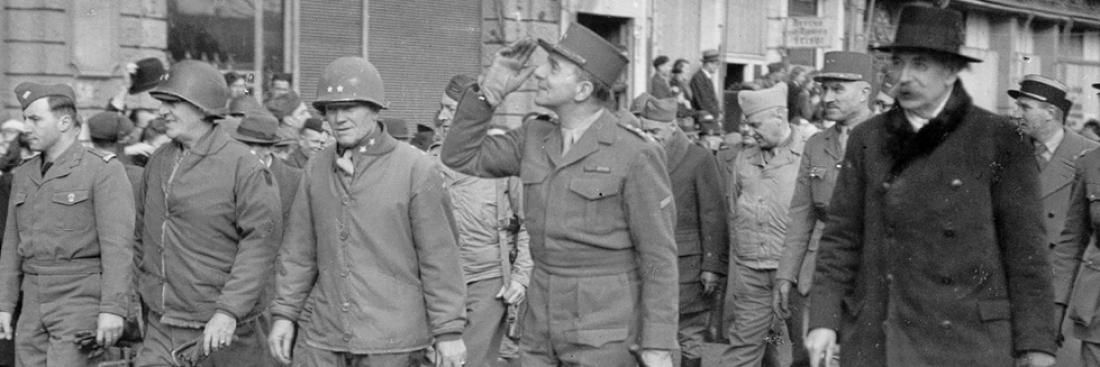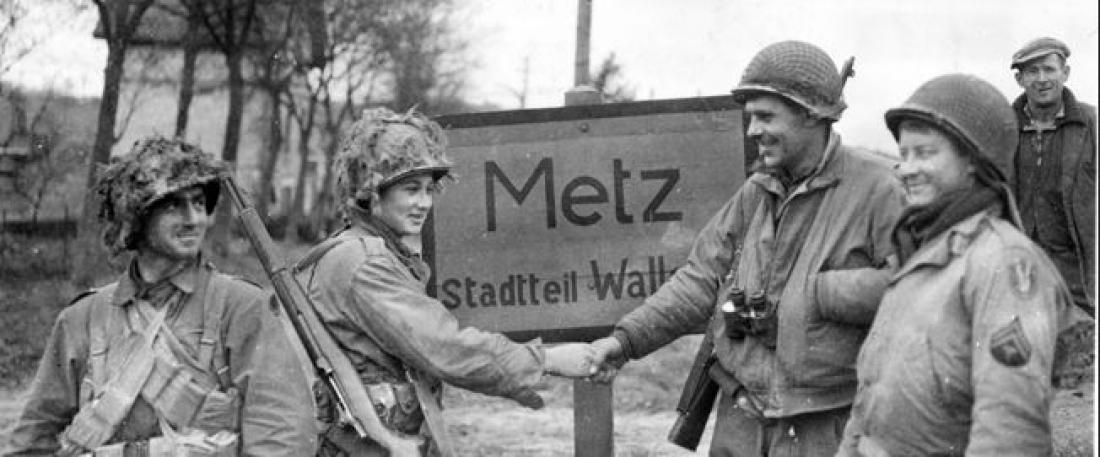
Le général de Lattre acclamé par la population de Colmar. Source : ECPAD
At the beginning of the Second World War (1939-45), Jean de Lattre de Tassigny was France's youngest general.
After the signing of the armistice, on 22 June 1940, he set about planning to overcome the Nazi occupier, under the motto Ne pas subir ('Never give in'). His rallying to General de Gaulle's Free France took him to Algiers, which he left with his army in 1944 to liberate France, from Provence to the Rhine.
On 9 May 1945, de Lattre was present in Berlin, alongside the Allies, to sign, on behalf of France, the official act of surrender of Nazi Germany.
